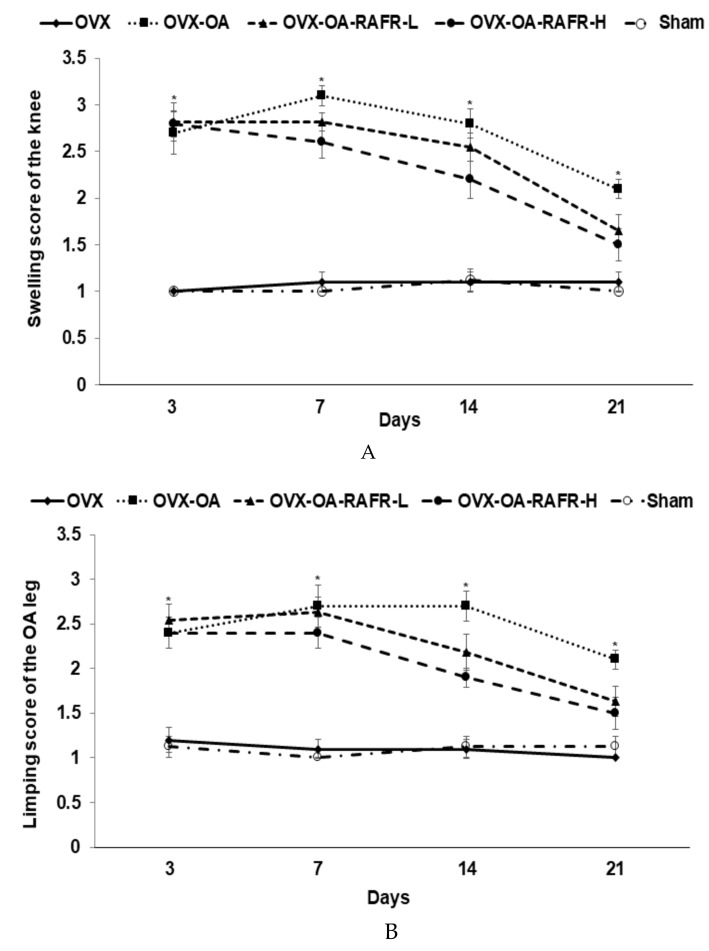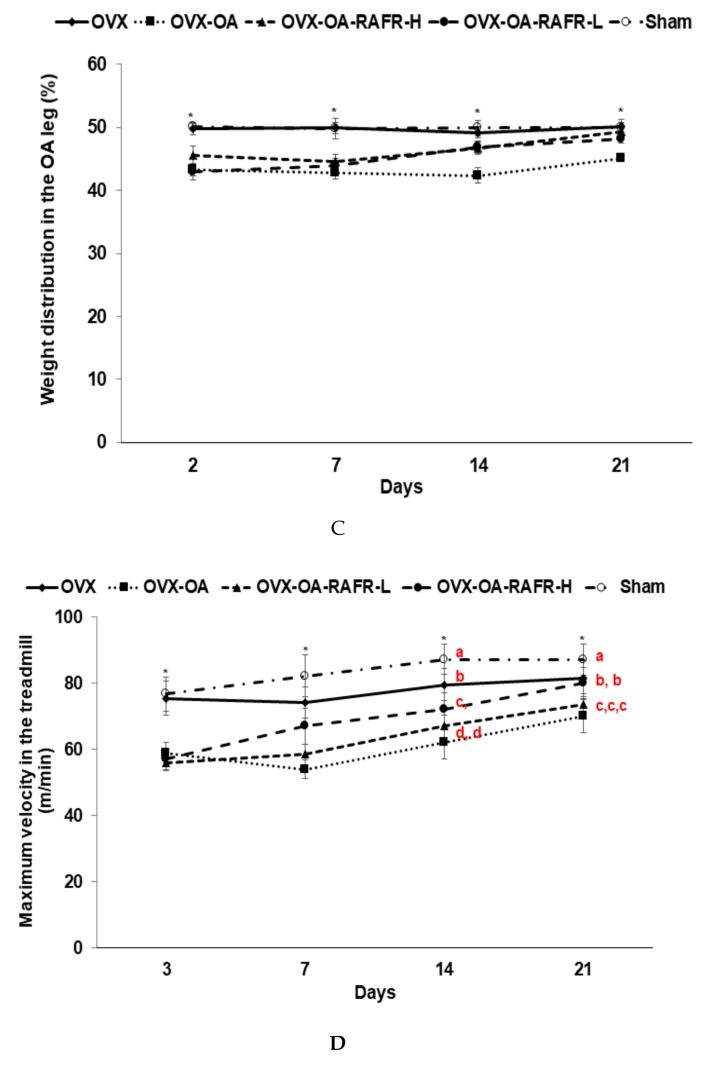Figure 4.
Gross observations of osteoarthritis symptoms and pain-related behaviors at 3, 7, 14, and 21 days after monoiodoacetate (MIA)-injection Ovariectomized (OVX) rats were divided into four groups: (1) MIA injection into the knee joint and fed a high-fat diet containing 0.23% rice + 0.018% AFR diet (RAFR-L). (2) MIA injection into the knee joint and fed a high-fat diet containing 0.69% rice + 0.053% AFR diet (RAFR-H). (3) MIA injection into the knee joint and fed a high-fat diet containing 0.053% cellulose (OA-control). (4) Saline injection into the knee joint and fed a high-fat diet containing 0.053% cellulose (non-OA control). Sham rats had the same diet as the control and received a saline injection (normal-control). At the beginning of the eighth week, an articular injection of monoiodoacetate (MIA) into the right knee was performed in all OVX groups except the normal-control group. The assigned diets were provided for an additional three weeks. During the gross observations of osteoarthritis symptoms, the swelling (A) and limping (B) scores in the right knee were measured. Differences in the weight distribution of the right hind paws (C) were measured via an incapacitance tester and the maximum running velocity on a treadmill (D) as indicators of knee pain. Each data point and error bar represent the mean ± SD (n = 10). * Significant treatment effect by repeated measures of a two-way ANOVA test at p < 0.05. ‡ Significant time effect by repeated measures of a two-way ANOVA test at p < 0.05. a,b,c,d Values of the bars with different superscripts were significantly different among groups as per the Tukey test at p < 0.05.


